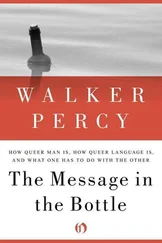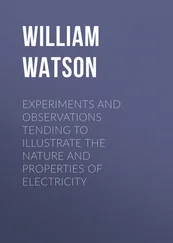Mark Changizi - Harnessed - How Language and Music Mimicked Nature and Transformed Ape to Man
Здесь есть возможность читать онлайн «Mark Changizi - Harnessed - How Language and Music Mimicked Nature and Transformed Ape to Man» весь текст электронной книги совершенно бесплатно (целиком полную версию без сокращений). В некоторых случаях можно слушать аудио, скачать через торрент в формате fb2 и присутствует краткое содержание. Год выпуска: 2011, Издательство: Perseus Books Group, Жанр: Старинная литература, на английском языке. Описание произведения, (предисловие) а так же отзывы посетителей доступны на портале библиотеки ЛибКат.
- Название:Harnessed: How Language and Music Mimicked Nature and Transformed Ape to Man
- Автор:
- Издательство:Perseus Books Group
- Жанр:
- Год:2011
- ISBN:нет данных
- Рейтинг книги:5 / 5. Голосов: 1
-
Избранное:Добавить в избранное
- Отзывы:
-
Ваша оценка:
- 100
- 1
- 2
- 3
- 4
- 5
Harnessed: How Language and Music Mimicked Nature and Transformed Ape to Man: краткое содержание, описание и аннотация
Предлагаем к чтению аннотацию, описание, краткое содержание или предисловие (зависит от того, что написал сам автор книги «Harnessed: How Language and Music Mimicked Nature and Transformed Ape to Man»). Если вы не нашли необходимую информацию о книге — напишите в комментариях, мы постараемся отыскать её.
Harnessed: How Language and Music Mimicked Nature and Transformed Ape to Man — читать онлайн бесплатно полную книгу (весь текст) целиком
Ниже представлен текст книги, разбитый по страницам. Система сохранения места последней прочитанной страницы, позволяет с удобством читать онлайн бесплатно книгу «Harnessed: How Language and Music Mimicked Nature and Transformed Ape to Man», без необходимости каждый раз заново искать на чём Вы остановились. Поставьте закладку, и сможете в любой момент перейти на страницу, на которой закончили чтение.
Интервал:
Закладка:
These gong observations are crucial for understanding what happens to voiced and unvoiced plosives when they are not released (i.e., when the air in the mouth and lungs is not allowed to burst out, creating the explosive hit sound), which often occurs at word endings (as discussed in the section titled “Two-Hit Wonder”). When a plosive is not released, there clearly cannot be a hit-to-ring gap—because it never rings. So how do voiced and unvoiced plosives retain their voiced-versus-unvoiced distinction at word endings? For example, consider the word “bad.” How do we know it is a “d” and not a “t” at the end, given that it is unreleased, and thus there is no hit-to-ring delay characterizing it as a “d” and not a “t”?
My gong story makes a prediction in this regard. If voiced plosives really have their foundation in rigid objects (mimicking rigidity’s imperceptibly tiny hit-to-ring gap at a word’s beginning), then, because rigid objects are poor mufflers, the sonorant preceding an unreleased voiced plosive at a word ending should last longer than the sonorant preceding an unreleased un voiced plosive at a word ending. For example, the vowel sound in “bad” should last longer than in the word “bat.” The nonrigid “t” at the end of the latter should muffle it quickly. Are words like “bad” spoken with vowels that ring longer than in words like “bat”?
Yes. Say “bad” and “bat.” The main difference is not whether the final plosive is voiced—neither is, because neither is ever released, and thus neither ever gets to ring. Notice how when you say “bad,” the “a” gets more drawn out, lasting longer, than the “a” sound in “bat.” Most nonlinguist readers may never have noticed that the principal distinguishing feature of voiced and unvoiced plosives at word endings is not whether they are voiced at all. It is a seemingly unrelated feature: how long the preceding vowel lasts. But, as we see from the physics of events, a longer-lasting ring before a dampening hit is the signature of a rigid object’s bouncy hit, and so there is a fundamental ecological order to the seemingly arbitrary linguistic phonological regularity. (See Figure 8.)

Figure 8. Matrix illustrating the tight match between the qualities of hits (not in parentheses) and plosives (within parentheses). For hits, the columns distinguish between rigid and nonrigid hits, and the rows distinguish between hits that initiate rings and hits that muffle rings. Inside the matrix are short descriptions of the auditory signature of the four kinds of hits. For plosives, the columns distinguish the analogs of rigid and nonrigid hits, which are, respectively, voiced and unvoiced plosives; the rows distinguish the analogs of ring-initiating and ring-muffling hits, which are, respectively, released and unreleased plosives. Together, this means four kinds of hits, and four expected kinds of plosives, matching the signature features of the respective hits. If the meaning of voiced versus unvoiced concerns rigid versus nonrigid objects, then we expect that plosives at word starts should have little versus a lot of voice-onset time, respectively, for voiced and unvoiced. And we expect that for plosives at word endings the voiced ones should reveal themselves via a longer preceding sonorant (slow to damp) whereas unvoiced should reveal themselves via a shorter preceding sonorant (fast to damp). Plosives do, in fact, modulate across this matrix as predicted from the ecological regularities of rigid and nonrigid hits at ring-inceptions and ring-dampenings.
Over the last half dozen sections of this chapter we have analyzed the constituents—the hits, slides, and rings—of events and language. Hits, slides, and rings may be the fundamental building blocks for human speech, but that alone doesn’t make speech sound natural. Just as natural contours can be combined in unnatural ways for vision, natural sound atoms can be combined unnaturally for audition. Language will not effectively harness our auditory system if speech combines plosives, fricatives, and sonorants in unnatural ways, like “yowoweelor” or “ptskf.” To find out whether speech sounds like nature, we need to understand how nature’s phonemes combine, and then see if language combines in the same way. For the rest of this chapter, we will look at successively larger combinations of sounds. But we turn first to the simplest combination.
Nature’s Syllables
My friend’s boy made a video of himself solving a Rubik’s Cube blindfolded, and then posted it on the Web. As I watched him put the blindfold on, pick up the cube, and begin twisting, I noticed something strange about the sound, but I couldn’t put my finger on what was unusual. Later, when I commented to my friend how his bright boy must owe it to inheritance, he replied, “Indeed, the apple doesn’t fall far from the tree. He faked it. The movie was in reverse.”
The world does not sound the same when run backward. What had raised my antennae when watching the Rubik’s Cube video was the unusual sounds that occur when one hears events in reverse. One of the first strange sounds occurred when he picked up the cube at the start of the video. Knowing now that it was shown in reverse, what appeared in the video to be him picking up the cube to begin unscrambling it was actually him setting the cube down after having scrambled it. Setting the cube down caused a hit and a ring, but in reverse what one hears is a ring coming out of nowhere, and ending with a sudden ring-stopping hit (the second voice of a hit, as discussed earlier in the section titled “Two-Hit Wonder”). That just doesn’t happen much in nature. When nature comes to the door, it knocks before ringing, not the other way around. Rings don’t start events. Rings are due to the periodic vibrations of objects, and objects do not typically ring without first being in physical contact with another object. Rings therefore do not typically occur without a hit or slide occurring first.
Hits, slides, and rings may be the principal fundamental building blocks for events, but rings are a different animal than hits and slides. Hits and slides involve objects in motion, physically interacting with other objects. Hits and slides are the backbone of the causal chain in an event. Rings, on the other hand, occur as a result of hits or slides, but don’t themselves cause more events. Rings are free riders, contributing nothing to the causality. Events do not have a ring followed by another ring. That’s impossible (although a single complex, or wiggly, ring is possible, as we discussed in an earlier section). And events never have an interaction (i.e., a hit or a slide) followed directly by another interaction without an intervening ring. Sometimes a ring will be inaudible, and so there will appear to be two interactions without an intervening ring, but physically there’s always an intervening ring, because objects that are involved in a physical interaction always vibrate to some extent. Events also always end with a ring, although whether it is audible is another matter.
The most basic way in which hits, slides, and rings combine is, then, this:
Interaction—Ring
where the interaction can be either a hit or a slide. If we let c stand for a hit or a slide (because “c” can be pronounced either as a plosive, “k,” or as a fricative, “s”), and a stand for a ring (which, recall, can sometimes be wiggly), then the fundamental structure of solid-object physical events is exemplified by caca . Not acac . Not cccaccca . Not accacc . And so on. Letting b stand for hits and s for slides, events take forms such as ba , sa , baba , saba , basaba , and so on. Not ab or sba or a or bbb or ssb or assb or the like. This interaction-ring combination is perhaps the most fundamental event regularity in nature, and is perhaps the most perceptually salient. Objects percussively interact via either a hit or slide, and give off a ring. Our auditory system—and probably that of most other mammals—is designed to expect nature’s phonemes to come in this interaction-ring form.
Читать дальшеИнтервал:
Закладка:
Похожие книги на «Harnessed: How Language and Music Mimicked Nature and Transformed Ape to Man»
Представляем Вашему вниманию похожие книги на «Harnessed: How Language and Music Mimicked Nature and Transformed Ape to Man» списком для выбора. Мы отобрали схожую по названию и смыслу литературу в надежде предоставить читателям больше вариантов отыскать новые, интересные, ещё непрочитанные произведения.
Обсуждение, отзывы о книге «Harnessed: How Language and Music Mimicked Nature and Transformed Ape to Man» и просто собственные мнения читателей. Оставьте ваши комментарии, напишите, что Вы думаете о произведении, его смысле или главных героях. Укажите что конкретно понравилось, а что нет, и почему Вы так считаете.












